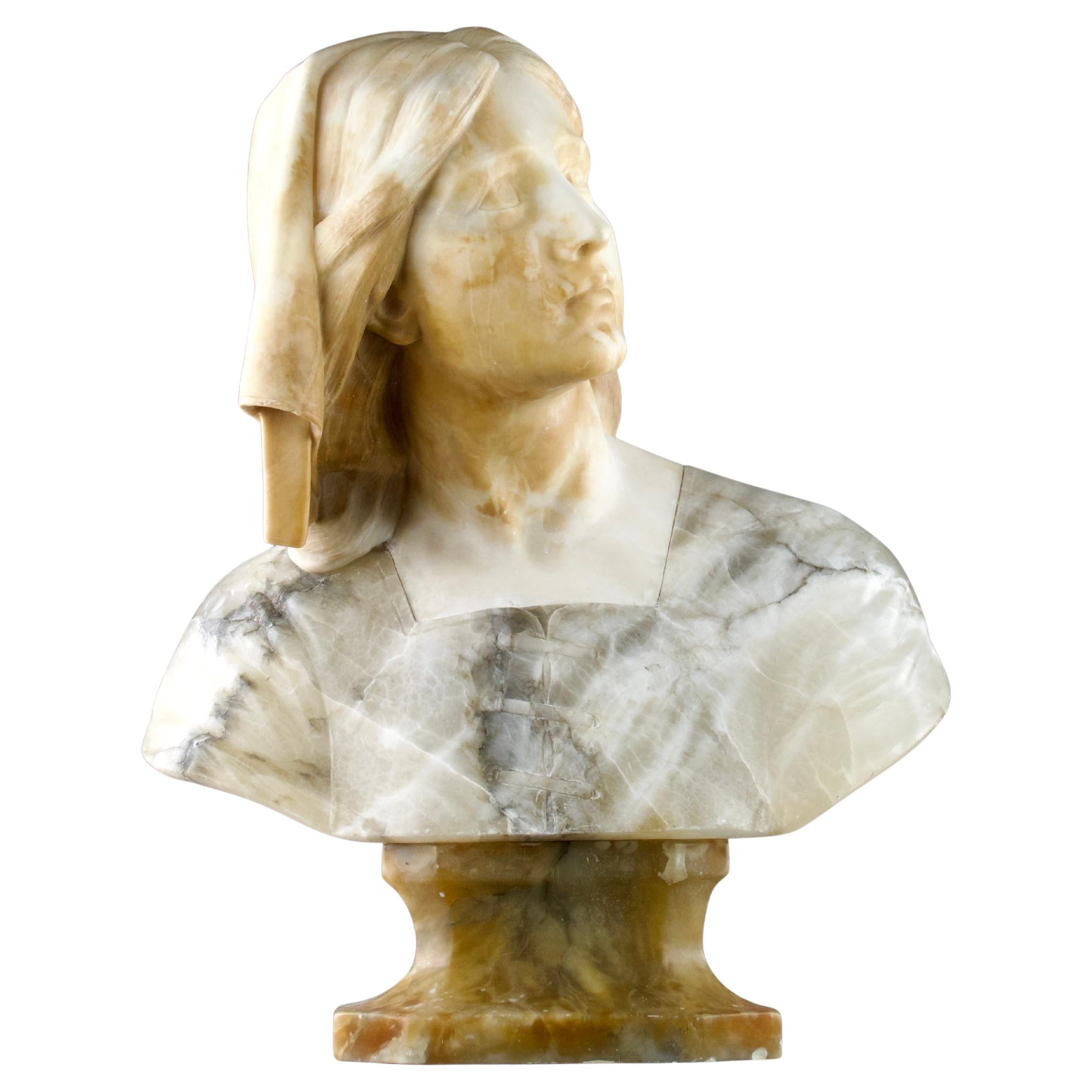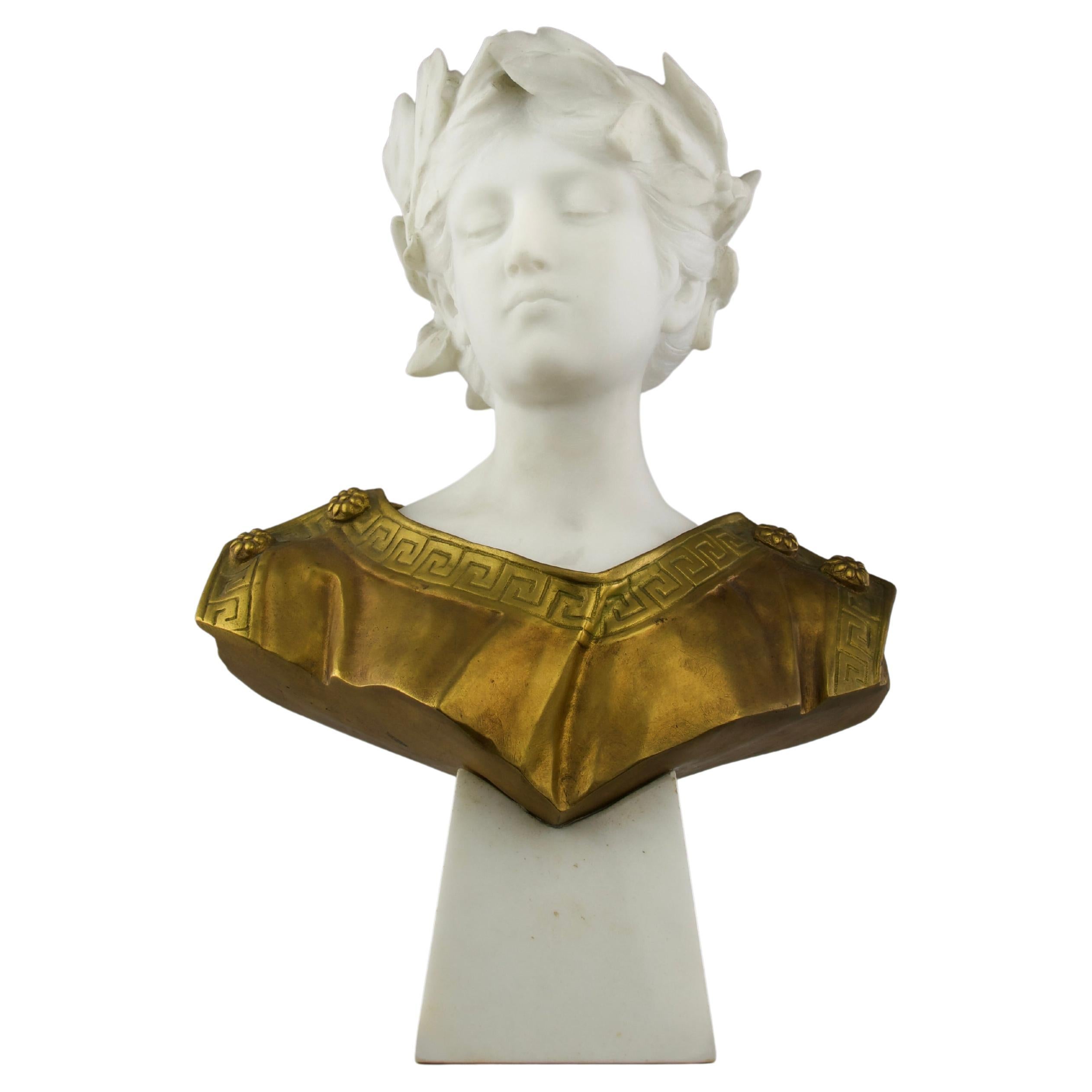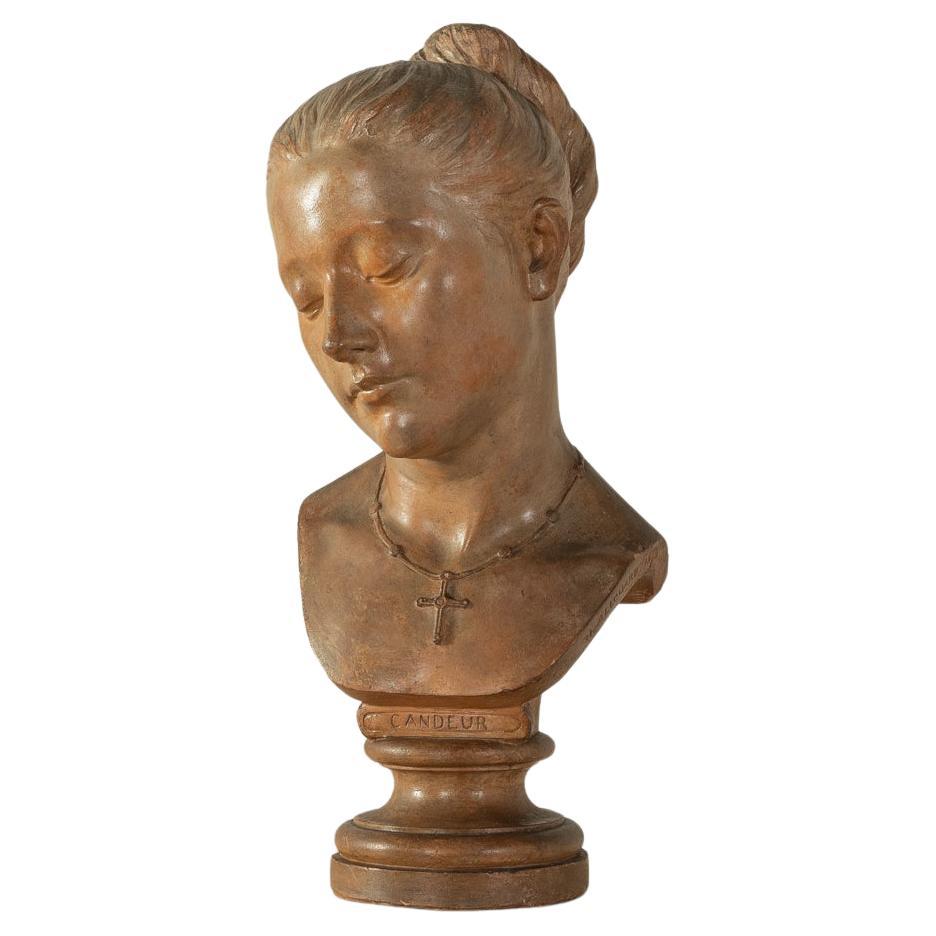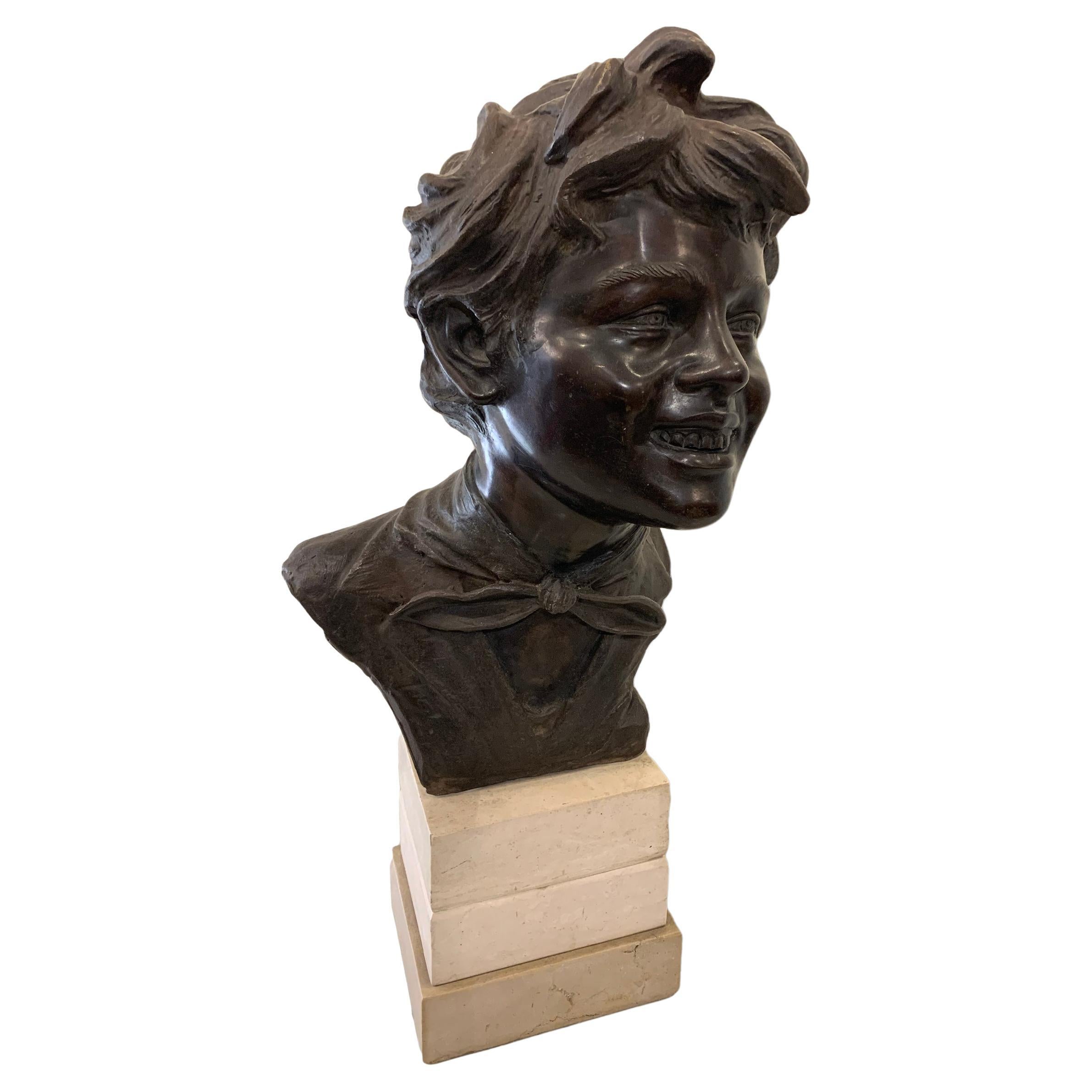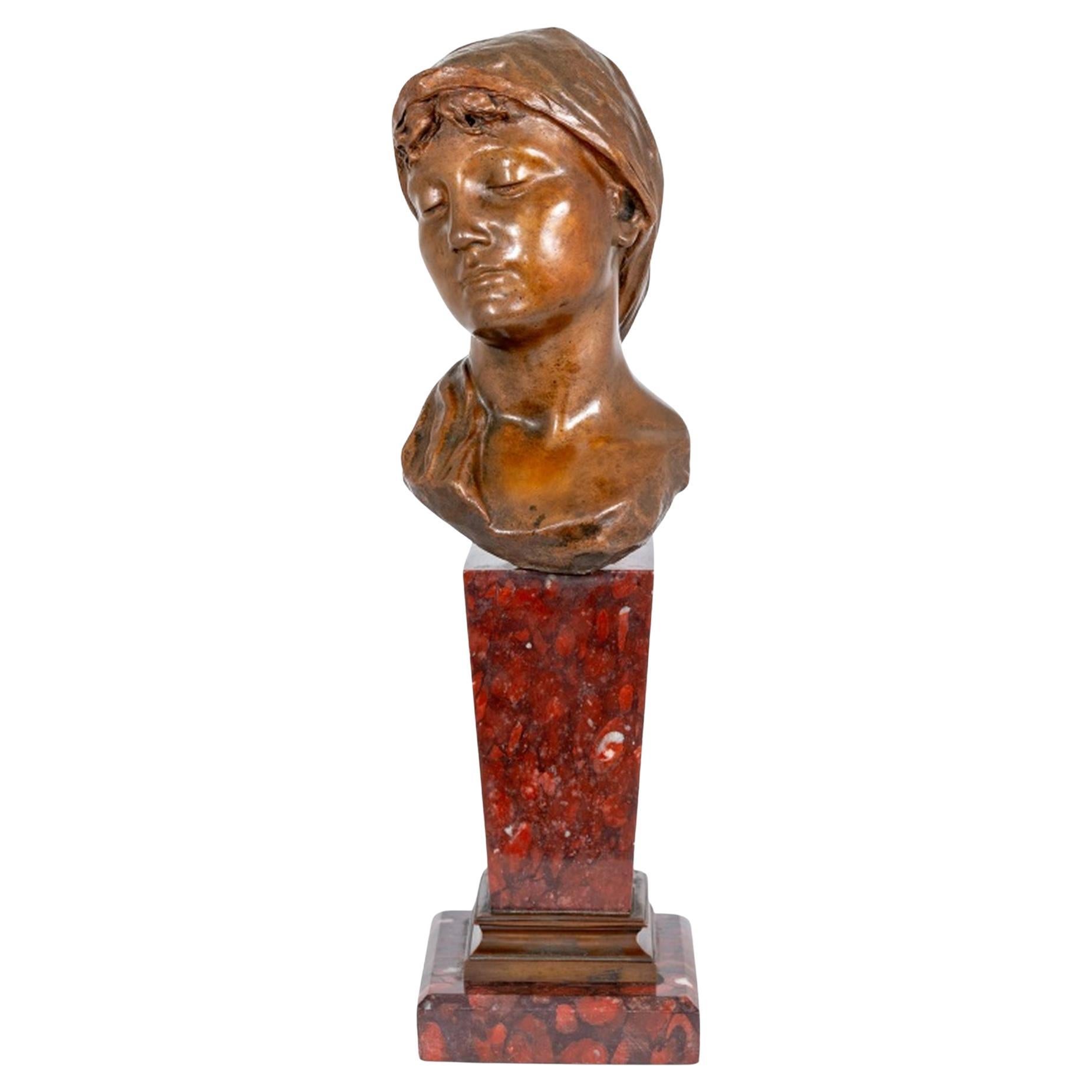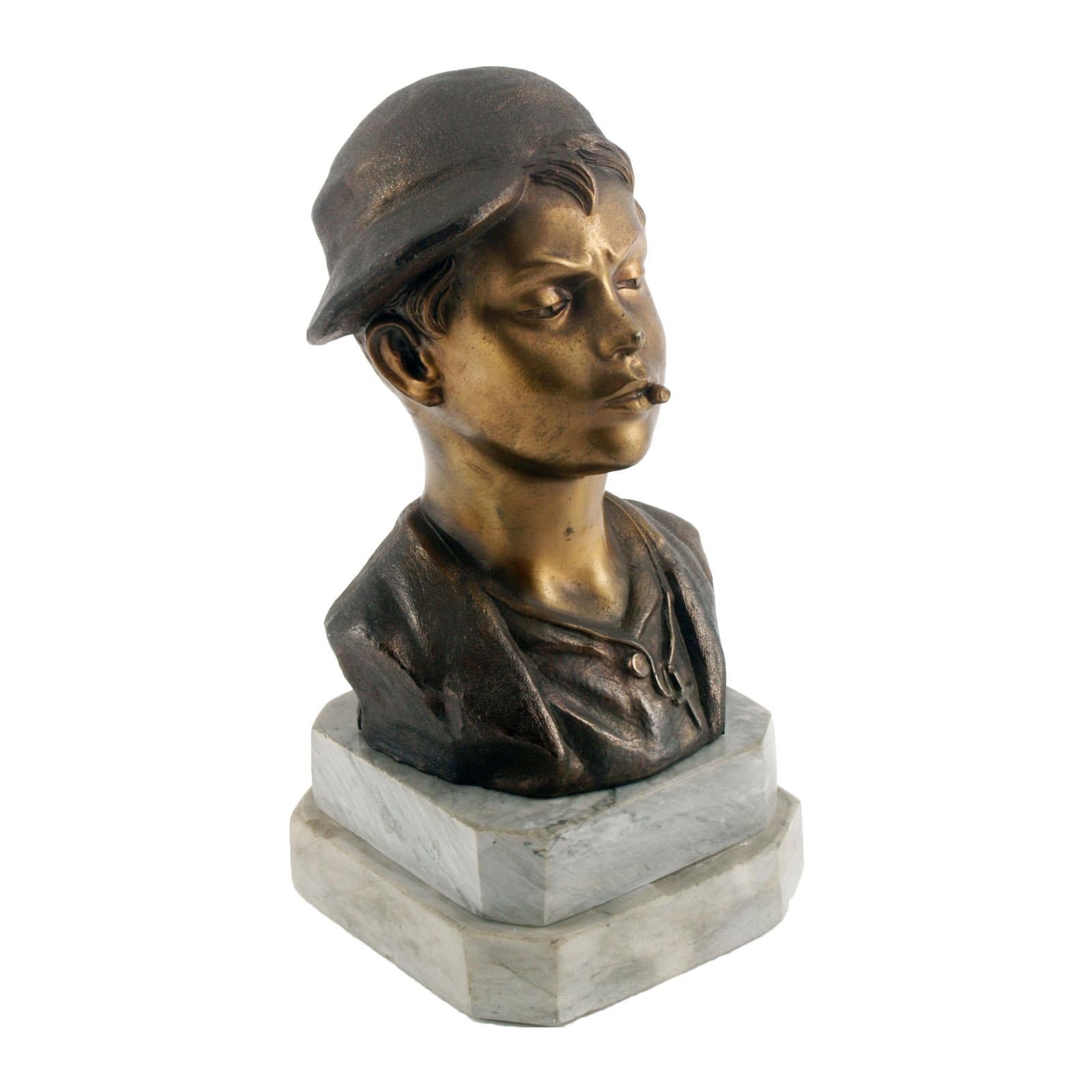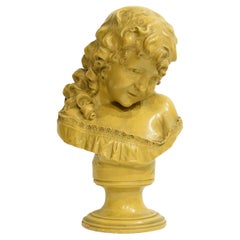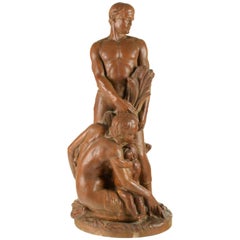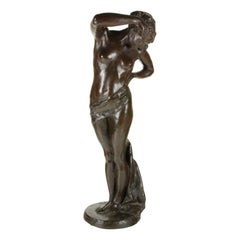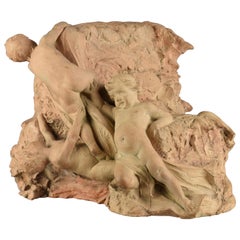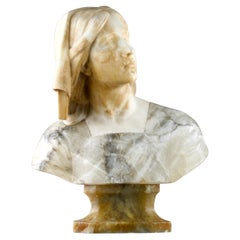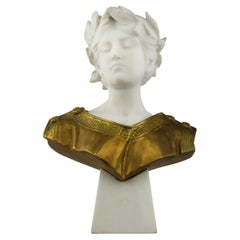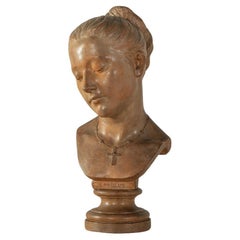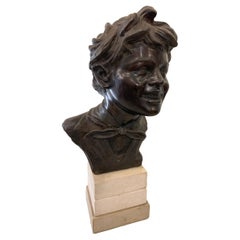Items Similar to Vincenzo Rosignoli 'Assisi, 1856 - Firenze, 1920' Scugnizzo
Want more images or videos?
Request additional images or videos from the seller
1 of 9
Vincenzo Rosignoli 'Assisi, 1856 - Firenze, 1920' Scugnizzo
$4,492.83
£3,364.79
€3,790
CA$6,297.83
A$6,938.74
CHF 3,591.91
MX$83,544.24
NOK 45,482.30
SEK 42,727.74
DKK 28,865.56
About the Item
He lived for many years in Florence, where he was a pupil of the sculptor augusto passaglia. He decorates numerous florentine buildings and creates various sculptures in tuscany and umbria, his native land.?
Florence, around 1890
Measures: Height 54 cm base in walnut wood 17 x 18 cm.
- Creator:Vincenzo Rosignoli (Author)
- Dimensions:Height: 21.26 in (54 cm)Width: 9.85 in (25 cm)Depth: 9.45 in (24 cm)
- Materials and Techniques:
- Place of Origin:
- Period:
- Date of Manufacture:circa 1880
- Condition:
- Seller Location:Prato, IT
- Reference Number:1stDibs: LU5715223634412
About the Seller
5.0
Vetted Professional Seller
Every seller passes strict standards for authenticity and reliability
Established in 1965
1stDibs seller since 2021
18 sales on 1stDibs
Typical response time: <1 hour
- ShippingRetrieving quote...Shipping from: Prato, Italy
- Return Policy
Authenticity Guarantee
In the unlikely event there’s an issue with an item’s authenticity, contact us within 1 year for a full refund. DetailsMoney-Back Guarantee
If your item is not as described, is damaged in transit, or does not arrive, contact us within 7 days for a full refund. Details24-Hour Cancellation
You have a 24-hour grace period in which to reconsider your purchase, with no questions asked.Vetted Professional Sellers
Our world-class sellers must adhere to strict standards for service and quality, maintaining the integrity of our listings.Price-Match Guarantee
If you find that a seller listed the same item for a lower price elsewhere, we’ll match it.Trusted Global Delivery
Our best-in-class carrier network provides specialized shipping options worldwide, including custom delivery.More From This Seller
View All19th Century Terracotta Bust of a Young Girl Signed by Andrea Flaibani
Located in Prato, IT
Andrea Flaibani Friulian sculptor (Udine, Italy 1846 - Udine, Italy 1897)
Terracotta
Measures: Height 38 cm
Width cm 23
Base diameter cm 15
Weight kg approx. 5.5.
As a young...
Category
Antique Late 19th Century Italian Neoclassical Busts
Materials
Terracotta
Emanuele Zambini Terracotta Sculpture
Located in Prato, IT
Firenze, Italy, 1942
In terracotta
Signed Emanuele Zambini
Measure: Height 61 cm.
Category
Vintage 1940s Italian Figurative Sculptures
Materials
Terracotta
Bronze Sculpture Signed Prof. Puntelli nude young girl
Located in Prato, IT
In dark patina bronze
Signed by Prof. Puntelli
Measures: Height 75 cm.
Category
Vintage 1910s Italian Figurative Sculptures
Materials
Bronze
Finely Modeled Terracotta Capital with Cherubs, Late 19th Century
Located in Prato, IT
Florence, late 19th century
Break repaired with old restoration (see photos)
Dimensions: cm H 30 x L 33 x P 26.
Category
Antique Late 19th Century Italian Figurative Sculptures
Materials
Terracotta
Flying Mercury in green marble copied from the famous work of Giambologna
Located in Prato, IT
Green serpentine marble sculpture
Late 19th century
Height approx. 88 cm.
The flying mercury and the bronzes
While he was still busy working on the fountain in piazza Maggiore, the papal delegate Cesi asked Giambologna for a statue to be placed in the courtyard of the Archiginnasio, seat of the ancient and prestigious Bolognese university; he should have painted a bronze depicting the god Mercury with his index finger stretched towards the sky, a symbol of the divine origin of knowledge, which would have served as a warning to all students.
The project was never completed, but Giambologna elaborated a model preserved at the Civic Museum of Bologna, which is only the first of the numerous bronzes with the same subject made by the artist, defined precisely as flying Mercury. In later versions, the sculptor transformed Mercury into a much more dynamic figure reaching upwards, as if ready to take flight, giving it an unprecedented freedom of movement and lightness. When he returned to Florence, the sculptor certainly proposed it to the Medici, who enthusiastically immediately ordered one to be sent to Emperor Maximilian II of Habsburg, as a diplomatic gift for the ongoing negotiations of the wedding between Francesco and Giovanna, sister of the sovereign.
Giambologna replied with the two bronzes preserved in Vienna and Dresden and in 1580 cast the large Mercury now exhibited in the Bargello, originally intended for the loggia of the villa of Cardinal Ferdinando dei Medici to crown a fountain placed in the center of a magnificent decorative complex; the only variant with respect to the previous examples is constituted by the head of Zephyr placed under the foot of the god and from which a breath of wind blows it upwards, accentuating the sense of immateriality. In addition to the successful invention of the flying Mercury, Giambologna acquired immense fame by making numerous other bronzes for the Florentine collectors of the time; his first patron, Bernardo Vecchietti must certainly have owned many, given to him in part by the sculptor in exchange for his protection, but around the 1880s it can be said that there was no collector who did not aspire to own a work by Giambologna, especially those of small format.
The development of this trend in Florence is largely due to the artistic passions of the Grand Duke Francesco I, who with the creation of environments such as the Studiolo in Palazzo Vecchio and the Tribuna degli Uffizi, provided new criteria for the exhibition of the works, pushing all collectors to imitate his extraordinary collection. In the Studiolo, in addition to the painted tables that decorated the doors of the cupboards filled with all kinds of things, there were 8 niches containing bronze figures of divinities; Giambologna painted the one depicting Apollo (1573-75), with the characteristic serpentine pose and beautifully finished.
The placement of the statuette in the niche was no longer an impediment to the plurality of views as Giambologna endowed it with a sort of mechanism that allowed it to rotate. For the Tribune he instead created the six Labors of Hercules (1576-1589), small silver sculptures...
Category
Antique Late 19th Century Italian Figurative Sculptures
Materials
Marble
Eight walnut Direttorio chairs, Tuscany, Lucca circa 1795
Located in Prato, IT
Eight walnut Direttorio Chairs with banded backs and floral pattern carving.
Paws with carved frames typical of Lucca.
Entirely hand-sewn straw seat.
Tuscany, late 18th century
Category
Antique Late 18th Century Italian Directoire Chairs
Materials
Walnut
You May Also Like
Af. Henri Chapu and Att. to Prof. Guiseppe BESSI, Joan of Arc Bust, Italy 19th C
By Henri Chapu, Giuseppe Bessi
Located in PARIS, FR
Superb Italian Joan of Arc marble bust after Henri Chapu attributed to Professor Giuseppe Bessi from the Italian 19th century romantic period. In wh...
Category
Antique 19th Century Romantic Busts
Materials
Alabaster, Marble
Attilio Fagioli, Young Emperor Bust Sculpture, Italy Early 20th Century
By Attilio Fagioli
Located in PARIS, FR
Superb marble and gilt bronze bust representing a young emperor with his robe and laurel wreath. Italy early 20th century, of the Romantic style.
Signed A. Fagioli.
Dimensions in ...
Category
Early 20th Century Italian Romantic Busts
Materials
Marble, Bronze
Terrakotta bust "Candeur", Henri Émile Allouard
Located in Neuss, NW
Wonderful Terrakotta bust "Candeur" (Innocence) by french artist Henri Émile Allouard (1844-1929). The sculpture in shades of light and dark brown showing an unknown woman was made i...
Category
Antique 1870s Art Deco Figurative Sculptures
Materials
Terracotta
Early 20th Century, V. Cinque Bronze Sculpture 'Scugnizzo'
Located in Firenze, FI
Beautiful lost wax cast bronze sculpture on a white marble base. It is signed by V. Cinque (1852-1929), part of the Neapolitan school of the early 1900s.
It depicts the classic Ne...
Category
Early 20th Century Italian Busts
Materials
Carrara Marble, Bronze
Eugene Rossi Patinated Bronze and Marble Bust
Located in Astoria, NY
Eugene Rossi (Italian, XIX-XX) Portrait Bust of a Woman, Patinated Bronze and Rouge Griotte Marble, early 20th century, depicting a Neapolitan woman, signed. 15" H x 4" W x 4" D.
Category
Early 20th Century Italian Art Nouveau Busts
Materials
Griotte Marble, Bronze
Art Deco Neapolitan 'Scugnizzo' Bust by De Martino, Gilt and Burnished Bronze
By Neapolitan Craftsman
Located in Vigonza, Padua
Neapolitan "Scugnizzo" bust, Street boy, in gilt and burnished bronze, circa 1920 by Giovanni De Martino .
Sculpture in gilded bronze and dark patina on a square base in light gray marble. The realistic trait typical of the author is striking. Signature of the artist De Martino on the back
Giovanni De Martino (Naples, 13 January 1870 - Naples, 3 March 1935) was an Italian sculptor active in Paris.
Important Bronze sculpture depicting a boy's head in Naples called "Scugnizzo"
Excellent quality and sublime workmanship, note the delicacy and expressiveness.
The sculpture is signed DE MARTINO on the back. GIOVANNI DE MARTINO (Naples 1870-1935) very important sculptor known for the production of sculptures of small bronze busts, in particular street urchins, fishermen, common people, with realistic features.
Excellent quality, as seen in the detail photos. Excellent workmanship. A truly beautiful sculpture!
BIOGRAPHY OF THE ARTIST
Giovanni de Martino (1870-1935) trained in Naples at the Academy of Fine Arts in Naples. He moved to Paris where he performed small sculptural groups and frequently exhibited at the "Paris Salon", winning the Louvre Museum prize for the bronze work Le Pêcheur de criquets (The Locust Fisherman).
Returning to Naples, he returned to a socialist realism and on dedication to the production of sculptures depicting characteristic Neapolitan types, in rascal species, "scugnizzi", children and young fishermen.
The dominant theme of his production is childhood: in particular he represents in his works pensive, sad, skinny children, on whose faces the signs of abandonment and suffering emerge (for this reason De Martino becomes known with the nickname of "The sculptor of children...
Category
Vintage 1920s Italian Art Deco Busts
Materials
Marble, Bronze
More Ways To Browse
19th Century Terracotta Bust
Terracotta Molds
Florentine Sculpture
French Terracotta Busts
Display Head
19th Century Terracotta Bust
Marble Neoclassical Bust
Girl Bust
Hand Carved Wood Bust
Marble Busts Black
Small Bust
Antique Carved Bust
Artist Bust
French Plaster Bust
Marble Busts Of Roman Emperors
Antique Alabaster Bust
Marie Antoinette Furniture
Sculpture Head Terracotta
